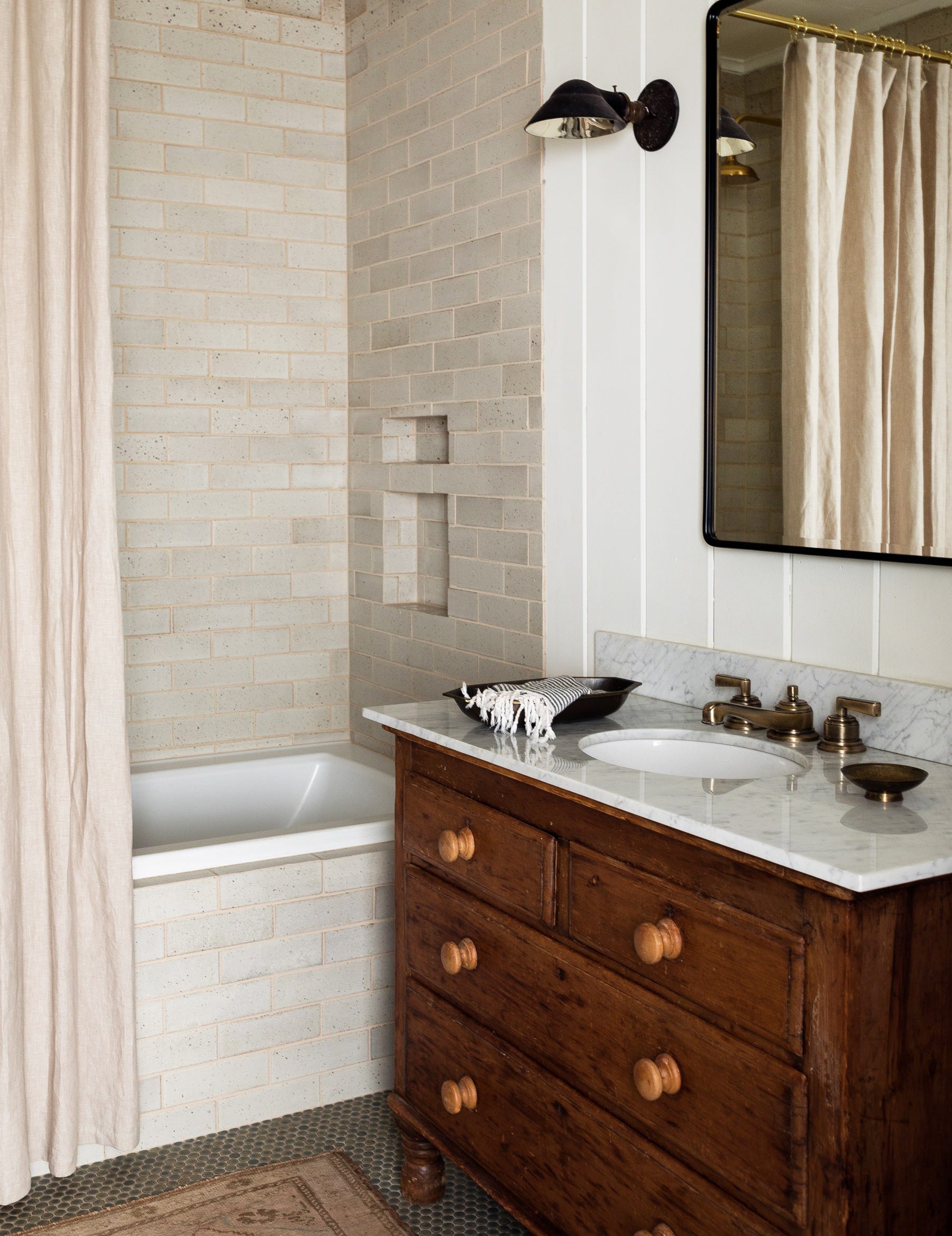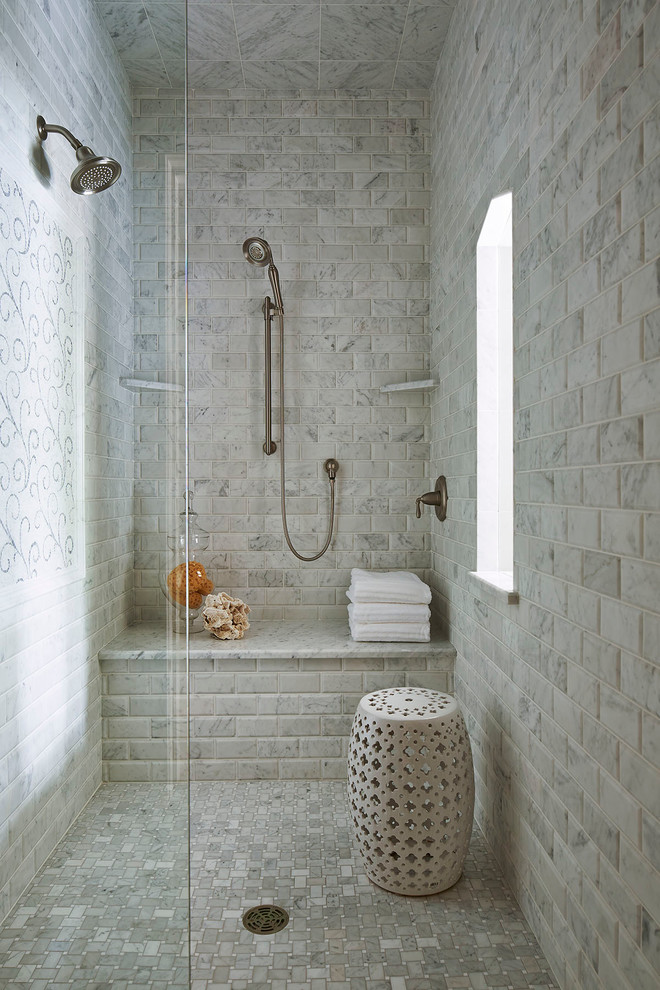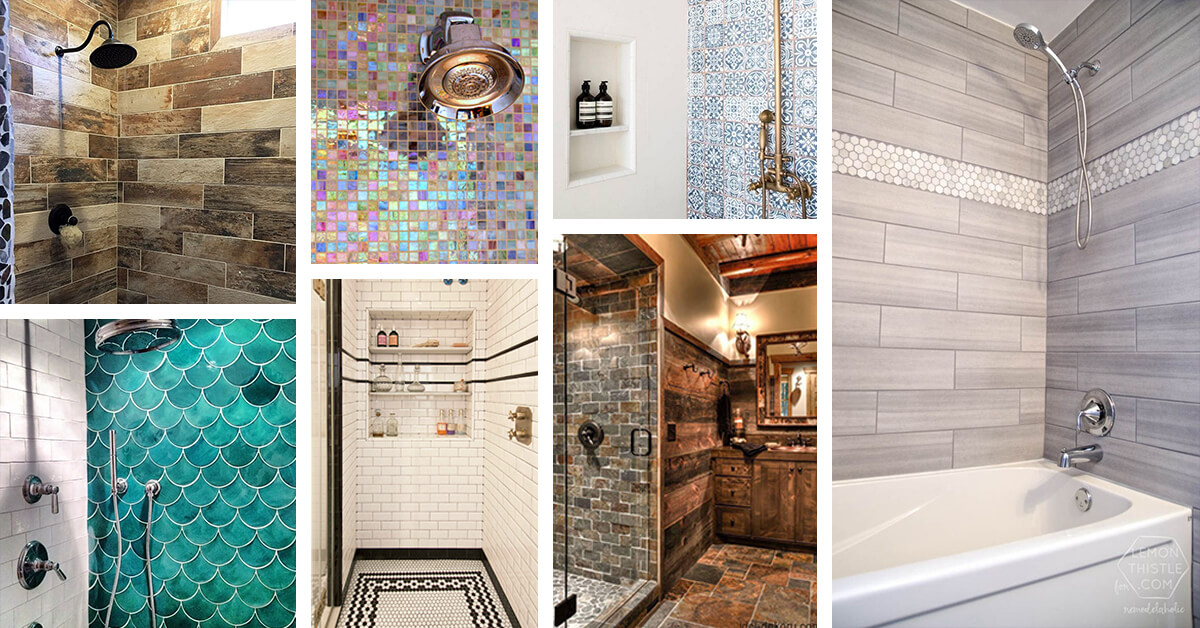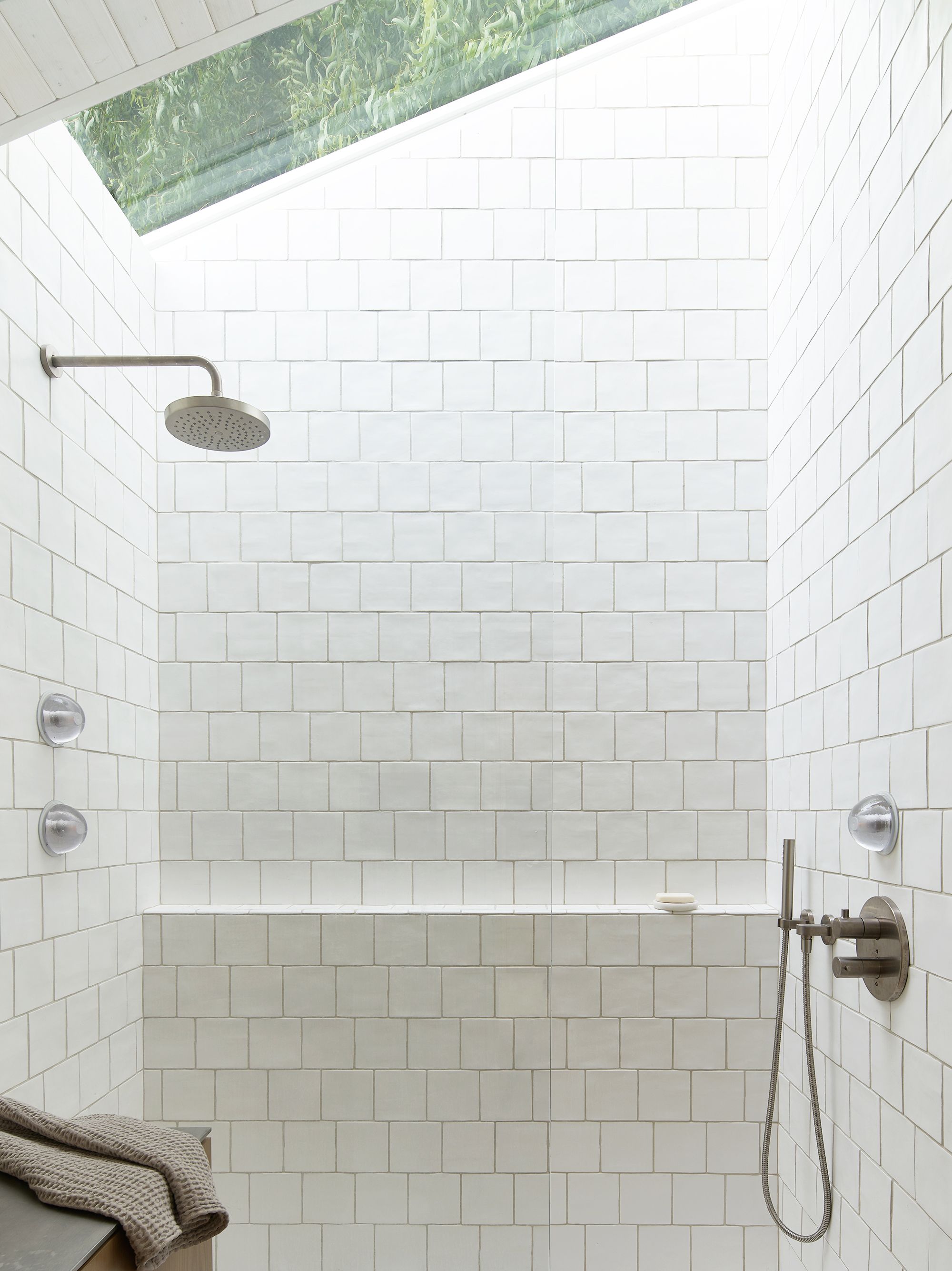Choosing the Right Tile Material for Your Shower
Choosing the right tile material for your shower is essential to ensure durability, aesthetics, and ease of maintenance. Here’s a guide to help you select the perfect material for your shower tiles:
- Ceramic Tiles Ceramic tiles are a popular choice for shower walls due to their affordability and versatility. They come in a wide range of colors, sizes, and patterns, making it easy to create the desired look. Ceramic tiles are also water-resistant and relatively easy to clean, but they can be prone to chipping if not installed properly.
- Porcelain Tiles Porcelain tiles are a step up from ceramic in terms of durability and water resistance. They are denser, less porous, and more resistant to stains and scratches. Porcelain tiles are ideal for both walls and floors in the shower. They are available in various finishes, including matte, polished, and textured, providing numerous design options.
- Natural Stone Tiles For a luxurious and timeless look, natural stone tiles such as marble, granite, and slate are excellent choices. Each stone tile has unique patterns and colors, adding a natural elegance to your shower. However, natural stone requires more maintenance, including sealing to prevent water absorption and stains. They can also be more expensive compared to ceramic or porcelain tiles.
- Glass Tiles Glass tiles are perfect for creating a sleek, modern shower design. They reflect light, making the shower space appear larger and brighter. Glass tiles are available in various colors and finishes, from clear to frosted, allowing for creative design possibilities. However, they can be slippery when wet and may require frequent cleaning to prevent water spots and soap scum.
- Mosaic Tiles Mosaic tiles are small tiles often made from ceramic, porcelain, glass, or natural stone. They come pre-arranged on mesh sheets for easy installation and can be used to create intricate patterns and designs. Mosaics are ideal for adding visual interest and detail to shower walls or floors. While they are stunning, their numerous grout lines can require more upkeep.
- Pebble Tiles Pebble tiles are made from natural stones arranged on a mesh backing, providing a spa-like, organic feel. They are often used for shower floors due to their textured surface, which offers good traction. Pebble tiles can also be used as accent walls. However, like natural stone, they need regular sealing and cleaning to maintain their appearance and prevent mold growth.

Popular Tile Patterns and Layouts for a Modern Shower
The pattern and layout of your shower tiles can significantly impact the overall look of your bathroom. Here are some popular patterns and layouts that suit a modern shower:
Subway Tile Pattern The classic subway tile pattern involves laying rectangular tiles in a staggered brick-like layout. This timeless pattern is versatile and works well with various tile colors and finishes. For a modern twist, consider using oversized subway tiles or arranging them vertically instead of the traditional horizontal layout.
Herringbone Pattern The herringbone pattern creates a zigzag effect by laying rectangular tiles at a 45-degree angle. This pattern adds a dynamic, eye-catching element to your shower design. It works particularly well with elongated tiles and can be used on both walls and floors to create visual interest.
Chevron Pattern Similar to herringbone, the chevron pattern features tiles cut at an angle and arranged in a continuous “V” shape. This pattern is sleek and modern, providing a sense of movement and sophistication. Chevron patterns are great for creating feature walls or accent areas within the shower.
Grid Pattern A grid pattern involves laying square or rectangular tiles in a straight, aligned manner to form a grid. This simple and clean layout is ideal for modern showers, offering a minimalist aesthetic. It works well with large-format tiles, creating a seamless and spacious look.
Hexagon Pattern Hexagon tiles bring a geometric flair to your shower. The honeycomb-like pattern adds a contemporary touch and can be used in various sizes and colors. Hexagon tiles are particularly effective for creating feature walls or shower niches, adding depth and texture to the design.
Basketweave Pattern The basketweave pattern consists of pairs of rectangular tiles laid in a way that they mimic the over-and-under weaving technique. This pattern adds a subtle, textured look to your shower, perfect for a modern yet classic design. It works well with contrasting grout colors to highlight the intricate layout.
Incorporating Accent Tiles for a Unique Shower Design
Incorporating accent tiles is a fantastic way to add personality and visual interest to your shower. Here are several ways to use accent tiles effectively:
Feature Wall Create a stunning focal point by designing a feature wall with accent tiles. Choose a contrasting color or a different material, such as glass or natural stone, to make the wall stand out. The feature wall can be placed behind the showerhead or on the longest wall in the shower to maximize impact.
Shower Niche A shower niche is a functional and stylish way to incorporate accent tiles. Line the inside of the niche with a different tile than the rest of the shower to create a pop of color and texture. This not only highlights the niche but also adds a decorative element to the overall design.
Accent Strip Add an accent strip or border around the shower for a subtle yet effective design touch. This strip can run horizontally or vertically and can be placed at eye level or at the top or bottom of the shower walls. Use mosaic tiles or a contrasting color to draw attention to this detail.
Flooring Accents Incorporate accent tiles into the shower floor to create a unique design. You can use a different tile material or pattern in the center or around the edges of the shower floor. This approach not only enhances the aesthetics but can also help define different areas within the shower.
Mixed Materials Mixing different tile materials within the shower can create a rich, layered look. For example, combine glass tiles with ceramic or porcelain tiles to add shine and dimension. Ensure the colors and textures complement each other to maintain a cohesive design.
Vertical Stripes Vertical stripes of accent tiles can elongate the look of your shower, making it appear taller and more spacious. These stripes can run from floor to ceiling or just within specific sections of the shower. Choose bold or metallic tiles for a striking visual effect.
The Best Color Schemes for Shower Tiles
Choosing the right color scheme for your shower tiles is essential for setting the mood and style of your bathroom. Here are some of the best color schemes to consider:
Classic White White tiles are timeless and versatile, creating a clean and bright shower space. They reflect light well, making the shower feel more spacious. Pair white tiles with contrasting grout colors, such as black or gray, to add definition and a modern touch. White tiles also serve as a perfect backdrop for colorful accents or fixtures.
Monochrome Gray Gray is a sophisticated and modern choice for shower tiles. It comes in various shades, from light silver to dark charcoal, allowing for a range of looks. Light gray tiles can create a serene and calming atmosphere, while darker grays add depth and drama. Combine different shades of gray for a layered, textured appearance.
Earthy Tones Earthy tones like beige, taupe, and brown bring a warm and natural feel to your shower. These colors are perfect for creating a spa-like retreat. Use natural stone tiles or wood-look tiles to enhance this effect. Earthy tones work well with greenery and natural accessories to complete the look.
Bold and Bright For a vibrant and energetic shower space, consider bold and bright colors such as blue, green, or even red. These colors can be used as accent tiles or throughout the entire shower for a dramatic statement. Pair bright tiles with neutral fixtures and accessories to balance the overall design.
Black and White A black and white color scheme is classic yet contemporary. Use white tiles as the base and add black tiles as accents or borders. This high-contrast look is striking and elegant, suitable for various design styles. Black and white tiles also offer flexibility in pairing with different textures and patterns.
Soft Pastels Soft pastel colors like mint green, blush pink, and light blue can create a soothing and charming shower space. These colors are perfect for a vintage or shabby chic design. Pastel tiles can be used alone or combined with white tiles to maintain a light and airy feel. They also work well with metallic fixtures for a touch of glamour.
Textured Tiles: Adding Dimension and Safety to Your Shower
Textured tiles can enhance the aesthetics and functionality of your shower. They add dimension, prevent slipping, and create a tactile experience. Here’s how to incorporate textured tiles effectively:
Safety and Slip Resistance One of the primary benefits of textured tiles is their slip-resistant surface, making them ideal for shower floors. Tiles with a textured or matte finish provide better traction than smooth, glossy tiles, reducing the risk of slips and falls. Look for tiles specifically designed for wet areas to ensure maximum safety.
Natural Stone Textures Natural stone tiles like slate, travertine, and marble have inherent textures that add a rugged, organic look to your shower. These textures can vary from subtle to pronounced, creating a unique, one-of-a-kind appearance. Natural stone tiles need to be sealed properly to maintain their beauty and durability in a wet environment.
3D Tiles Three-dimensional tiles are a modern trend that adds depth and interest to shower walls. These tiles come in various patterns, such as waves, geometric shapes, and floral designs. 3D tiles can be used to create a striking feature wall or as an accent within a more subdued tile layout.
Wood-Look Tiles Wood-look tiles offer the warm appearance of wood with the durability and water resistance of porcelain or ceramic. They come in various textures that mimic natural wood grain, adding a cozy and rustic feel to your shower. These tiles are perfect for creating a spa-like retreat without the maintenance issues associated with real wood.
Pebble Tiles Pebble tiles bring a natural, earthy texture to your shower floor or walls. The small, rounded stones provide a massaging effect underfoot and excellent slip resistance. Pebble tiles are typically pre-arranged on mesh sheets, making them relatively easy to install. They do require regular cleaning and sealing to prevent mold and mildew.
Patterned Textures Tiles with embossed patterns or raised designs can add subtle texture and visual interest. These patterns can range from simple linear grooves to intricate floral motifs. Patterned textured tiles are often used as accents or feature elements, providing a tactile and decorative element to the shower design.
Maintenance Tips for Keeping Your Shower Tiles Looking New
Maintaining your shower tiles is essential to keep them looking new and prevent issues like mold and grime buildup. Here are some effective maintenance tips:
Regular Cleaning Clean your shower tiles regularly to prevent soap scum, mildew, and hard water stains. Use a mild, non-abrasive cleaner and a soft brush or sponge to scrub the tiles. Avoid using harsh chemicals or abrasive tools that can damage the tile surface and grout.
Seal Your Tiles and Grout Sealing is crucial, especially for porous tiles like natural stone and grout lines. A high-quality sealant creates a protective barrier that prevents moisture, stains, and mildew. Reapply the sealant as recommended by the manufacturer, usually every 6 to 12 months, to maintain its effectiveness.
Ventilation Proper ventilation is essential to prevent moisture buildup and mold growth in your shower. Ensure your bathroom has adequate ventilation by using an exhaust fan during and after showers. Leave the shower door or curtain open to allow air circulation and speed up drying.
Grout Maintenance Grout can be a magnet for dirt and mildew. Clean grout lines regularly with a grout cleaner or a mixture of baking soda and water. For stubborn stains, a small amount of hydrogen peroxide can be effective. If the grout becomes damaged or discolored, consider regrouting to restore its appearance and functionality.
Address Hard Water Stains Hard water stains can leave unsightly marks on your tiles. To remove them, use a solution of equal parts white vinegar and water. Apply the solution to the stains, let it sit for a few minutes, and then scrub with a soft brush. Rinse thoroughly with water and dry with a clean cloth.
Preventive Measures Take preventive measures to reduce the buildup of soap scum and grime. Use a squeegee to wipe down the shower walls and floor after each use. Consider installing a water softener if your home has hard water, as this can reduce mineral deposits on your tiles. Additionally, use liquid soap instead of bar soap to minimize soap scum.
Best Shower Tile Ideas and Designs for 2024
Modern Shower Tile Ideas and Designs
Cool And Eye-Catchy Bathroom Shower Tile Ideas
Best Shower Tile Ideas and Designs
Best Shower Tile Ideas (2024 Designs)
Best Shower Tile Ideas
Bathroom Tile Ideas – Bath Tile Backsplash and Floor Designs
Related Posts:











